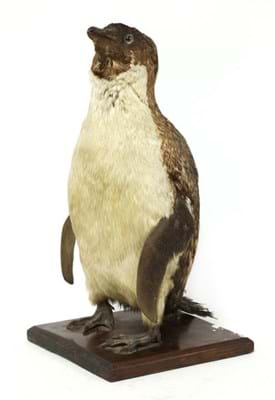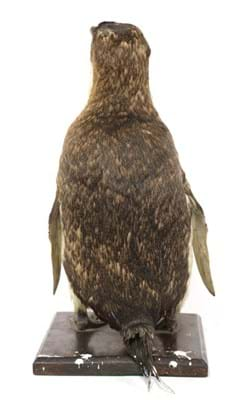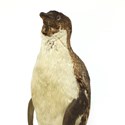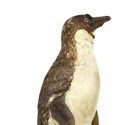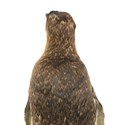Offered at Sworders March 10-11 sale, the 18.5in (47cm) high stuffed and mounted bird had been given to the vendor’s family by the Terra Nova’s doctor. Consigned with expectations of £2000-3000, it sold at £10,500.
The buyer was Canterbury Museum in Christchurch, New Zealand which will add the penguin to its diverse collection of Antarctic memorabilia and photographs. Bidding at the auction on the phone, it also secured a mixed lot of four watercolours and items of clothing belonging to Apsley George Benet Cherry-Garrard (1886-1959), the youngest member of Captain Scott’s 'Terra Nova' expedition, at £1600.
The competition underlined the strength of demand for items connected to the ‘Heroic Age’ of Polar exploration – it followed the £9000 bid for a penguin’s egg from the expedition that sold at Stroud Auction Rooms last year.
Provenance
Robert Falcon Scott’s doomed expedition, that arrived in Antarctica on January 4, 1911, hoped to be the first to reach the South Pole but it also had scientific objectives. The study of penguins, believed at the time to represent the evolutionary ‘missing link’ between birds and reptiles, was a key part of the expedition.
This Adélie specimen, possibly mounted by the London taxidermy firm Rowland Ward, was given to the vendor's great-grandmother Lady Porter and her husband, Surgeon Vice-Admiral Sir James Porter (1851-1935) by the Terra Nova’s doctor and parasitologist Edward Leicester Atkinson (1881-1928).
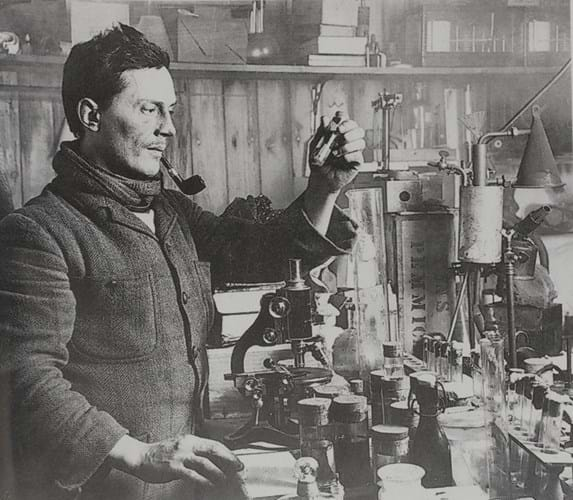
Terra Nova’s doctor and parasitologist Edward Leicester Atkinson who gave the Adélie penguin specimen to the great-grandmother of Sworders’ vendor.
In a letter dated December 22, 1913 that formed part of the lot, Atkinson wrote: “Dear Lady Porter, I had hoped to have ready by Xmas an Adélie penguin as an Xmas present for Sir James and yourself. They have taken so long over them at the stores that they will not be ready, but if you will accept it I will send it as soon as I can.”
As the man in charge of ‘base camp’ at Cape Evans, Atkinson has become a controversial figure in the Terra Nova story – criticised for the way supplies were organised along Scott's return route. It was Atkinson who led the search of the Great Ice Barrier where, on November 12, 1912, the bodies of Scott, Henry ‘Birdie’ Bowers and Edward Wilson were found together with Scott’s letter and diary, with its last entry dated March 29.

